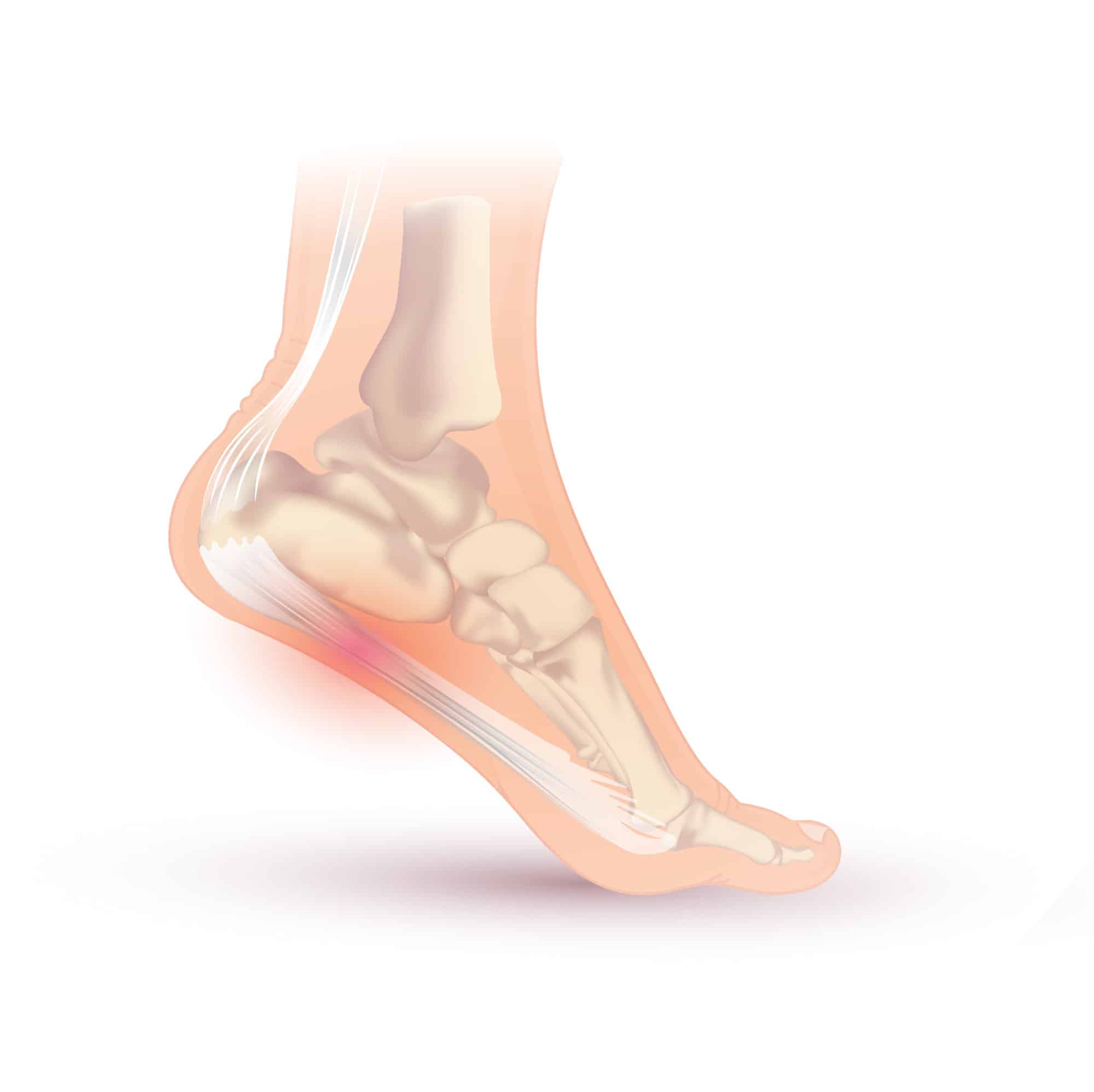(Image Credit: Wikimedia Commons)
When it comes to foot pain, one common culprit is plantar fasciitis. This condition, affecting the plantar fascia in the foot, can cause discomfort and limit your daily activities. In this article, we will delve into what plantar fasciitis is, its causes, symptoms, and available treatment options, empowering you to take control of your foot health.
What is Plantar Fasciitis?
Plantar fasciitis refers to the inflammation of the plantar fascia, a thick band of tissue that runs along the bottom of the foot. This connective tissue connects the heel bone to the toes, providing support to the foot’s arch.
When the plantar fascia becomes inflamed or irritated, it can lead to pain and tenderness in the heel or arch region.
Causes of Plantar Fasciitis
Several factors can contribute to the development of plantar fasciitis, including:
- Overuse or Repetitive Strain: Engaging in activities that involve excessive running, jumping, or standing for long durations can strain the plantar fascia, leading to inflammation and injury.
- Foot Structure: Individuals with flat feet or high arches are more prone to plantar fasciitis due to the uneven distribution of weight and altered biomechanics.
- Weight Gain and Obesity: Additional body weight places increased stress on the feet, which can contribute to the development of this condition.
- Improper Footwear: Wearing shoes that lack proper arch support or cushioning can increase the risk of plantar fasciitis.
- Tight Calf Muscles: Limited flexibility and tightness in the calf muscles can affect foot function and lead to plantar fasciitis.
Signs and Symptoms
Plantar fasciitis manifests in various ways, including:
- Pain and Tenderness: Sharp, stabbing pain is commonly experienced in the heel or arch of the foot, especially during the first steps in the morning or after prolonged periods of inactivity.
- Pain Aggravated by Activity: Walking, running, or standing for extended periods can exacerbate the pain and discomfort associated with plantar fasciitis.
- Stiffness and Limited Mobility: The affected foot may feel stiff, making movement and flexibility challenging.
- Swelling and Inflammation: In some cases, the area around the heel or arch may become swollen and exhibit signs of inflammation.
Treatment Options
Thankfully, numerous treatment approaches can help manage and alleviate plantar fasciitis symptoms. These include:
- Rest and Ice: Taking a break from activities that worsen the pain and applying ice to the affected area can reduce inflammation and provide temporary relief.
- Stretching and Strengthening Exercises: Specific stretching exercises targeting the calf muscles and the plantar fascia can help improve flexibility and strengthen the foot muscles.
- Insoles for plantar fasciitis: Using shoe inserts or custom orthotics can provide additional arch support and cushioning, reducing strain on the plantar fascia.
- Suitable Footwear: Opt for well-fitting shoes with proper arch support and cushioning to alleviate pressure on the plantar fascia.
- Physical Therapy: Working with a physical therapist can help identify and address muscle imbalances, correct gait abnormalities, and provide targeted exercises for pain management and prevention.
- Medications: Nonsteroidal anti-inflammatory drugs (NSAIDs) may be recommended by a healthcare professional to reduce pain and inflammation.
- Night Splints: Wearing night splints can help stretch the calf muscles and the plantar fascia, promoting healing and reducing morning pain.
- Extracorporeal Shock Wave Therapy (ESWT): This non-invasive treatment option uses shock waves to stimulate healing in the affected area and reduce pain.
- Corticosteroid Injections: Reserved for severe cases, corticosteroid injections can provide temporary relief by reducing inflammation and pain.
Conclusion
Plantar fasciitis can be a frustrating and painful condition, but with the right knowledge and treatment, you can find relief and improve your foot health. It is essential to consult with a healthcare professional for an accurate diagnosis and personalized treatment plan tailored to your specific needs.
By adopting appropriate measures and incorporating recommended therapies, you can effectively manage plantar fasciitis, restore comfort, and regain your mobility. Click here to browse our range of plantar fasciitis supports.


